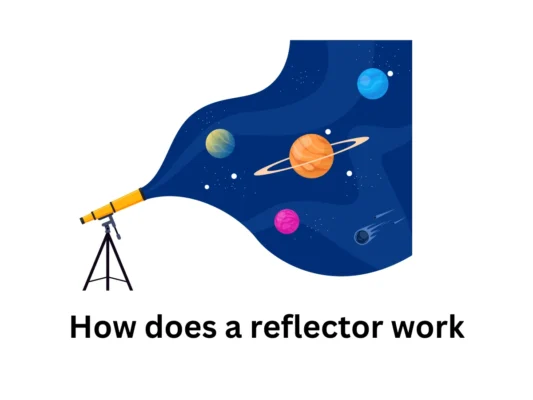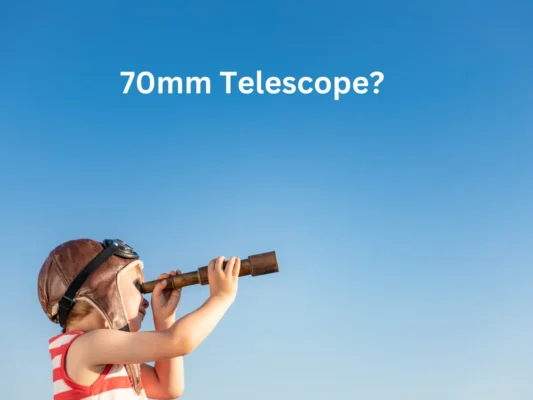A reflector is a device that reflects light in order to direct it back towards the original source so that you will know How does a reflector work? They are most commonly used in photography and film production for this purpose, but also can be found in other applications such as street lights and traffic signs. Reflectors come in many sizes and shapes, with some designed to work best at specific angles or distances from the sun. With so many different types of reflectors available on the market today, how does one know which one will work best?
What is a reflector?
Reflectors are an important tool in the world of photography. They are used to either bounce light back onto a subject or reflect light into the shadows. Reflected light can be helpful for photographers who want to create more natural looking images without having to use flash, which can sometimes result in unflattering photos due to red-eye and other issues. Reflectors come in many shapes and sizes, with some being collapsible for easy transport.
Top 5 tips for How does a reflector work?
One of the best ways to get great pictures is by using a reflector. You can simply hold it at an angle that reflects light like how you want, then watch as different types and colors come into focus with just one simple tool. A small but powerful piece of equipment for any professional photographer on-the-go or those looking forward to starting up their own photography business.

Position to holding a reflector
If you hold the reflector directly opposite the light source, it will give off a lot of bright and intense illumination. Depending on how much there is to start with though, not all angles or positions can get lit up in this way because some parts just don’t receive as much reflection from another angle or position, so they’re left out entirely when someone casts shadows onto them like below without even knowing that was happening.
Using a reflector to fill in shadows
An odd shadow can be fixed with a reflector. If the source of light is directly behind your subject, it’ll help prevent an undesirable silhouette from being created by using one in front. For instance, if you are shooting towards someone who has their back turned on the camera; placing something like this close to them will fill those dark areas and make everything come out looking great.
Try different angles
It’s not just portraits that benefit from using a reflector. Laying the reflective surface on its side or at an angle can help prevent under-eye shadows when taking pictures of people who are facing away from you, like in this example shot by Adeline Salisbury for V Magazine UK.
Attach the reflector by using a stand
You know that perfect angle of your subject? Well, it’s impossible to hold them there and still take a picture. Not all photographers are lucky enough with great hands or arms! But don’t worry; just get some help from friends or attach the reflector onto something sturdy like furniture so they can stand on their own for poses while capturing headshots – of course, if you need any props at all, let me know because I got this.
Take distance into consideration
Remember, distance matters too. One of the most common mistakes people make when shooting with a reflector is not being aware that they need to place their reflector further away from themselves and in order for its optimal use as a well-placed light source. Mimicking natural sunlight can be tricky due so much depends on where you stand within relation both physically AND mentally but there are some basic rules one should follow such as bear minimum distances between: yourself (subject), reflectors/diffuse panels, etc. This article will cover everything about working out these problems through trial & error; first, let’s explore what happens if we give our subject more than 1 reflective surface by testing different arrangements.
4 Reasons to use a Reflector in Photography
Amplify a poor light source
A reflector is a perfect solution for those who want to take their photography skills in dark or dimly lit environments. By redirecting light from stronger sources, you can make it more intense on subjects without having the need for using harsh studio lights and much expensive equipment like photo-light boxes that cost an arm and a leg! Reflectors come cheap too – they’re not even particularly heavy so transportation shouldn’t be difficult either if needed transport needs are outside your home area/city limits.
Photography reflectors are a great portable and easy-to-carry around lighting solution for those who need quick artificial light. They’re also much lighter than additional photo light boxes, so they can be taken anywhere without taking up too much space in your kit bag.
Diffuse a light source
Have you ever looked at a photo and been dismayed by the harm that too much flash or direct sunlight can do? An undiffused light source will wash out all features of an object in a way where harsh shadows fall on it. This problem occurs because generally, artificial lighting sources dispersion unevenly with natural ones; due to this fact, there’s only partial blast from such as an item which makes them overexposed when taken photos by us humans.
Diffusers come in all shapes and sizes, but they work by evenly spreading light passing through them so that the result is soft or diffused. These often have ‘5 in 1’ photography reflectors to help illuminate objects without creating harsh tones for food & fashion photographers who need their products photographed against a delicate background. A photo doesn’t look appetizing unless it’s lit well enough- Diffusing your strobe makes sure you get lovely photos every time.
Achieve special effects
With the right reflector, you can create a range of lighting effects. For example, think about how dark rooms will only show one object in focus or how models lit by just their eyes look angelic and ghostly at nighttime while other parts are highlighted with brilliant light that illuminates all around them. Reflectors also come in handy when trying out new techniques like backlighting which creates contrast between elements on your model’s clothing front facing us as they turn away from the camera slightly creating depth into those clothes.
Block useless light sources
Photography reflectors are a great tool for wildlife photoshoots because they can block out unwanted light sources. This means that animals, who would usually be running away from the harsh lights used in shoots with no barriers or reflective surfaces, will stand still as you take their picture.
Four things to consider when buying reflectors
There are an overwhelming number of options when it comes to reflectors. They come in different sizes, shapes, and colors all with their own unique properties that can be used for photography or stage lighting purposes.
No one wants only a few basic tools on hand; they prefer the comfort of knowing that there’s always more behind them if needed! There’s much available under this category: lightsabers (for any costume party), spotlights (the popular kind!) plus many others you may not have considered before because let’s face it – a reflector isn’t really what springs into mind first off as something needing reflection.
Size
Size is an important consideration when purchasing a light. Larger lights are softer, so if you pick up the smaller reflector it will likely create harsh shadows whereas with too large of one your pictures might not have good detail or be well-lit anymore due to its size and shape being more difficult for cameras to see through. A 42” middle ground would work best since this provides nice soft lighting while still having easy handling qualities.
Shape
You may think that all you need for a statement make-up look is some eye shadow, but there’s so much more than just what goes on your face! The shape and size of the light source can have an effect too. Along with determining how large or small these sparkles appear in someone’s eyes, keep in mind that reflectors also play major roles as catchlights or lights reflected back into their own pupils – which means every detail matters when it comes time to create such creative looks.
Color
A reflector can be the difference between a great photo and an average one. A silver or white reflector will bounce more light than gold, which has warmer tones that warm up your surroundings in post-production with Photoshop software. The drawback is these softer colors may not provide enough contrast against darker elements like buildings at night when using flash photography on stage sets which require sharpness for clear shots. The perfect balance depends largely upon what type of scene you’re shooting — a landscape with deep shadows might benefit from including both reds/oranges as well as greens so they pop offstage while still preserving detail such as mountains.
There are four colors to choose from when it comes to Four-in-one reflectors. You can get silver, white or gold on one side with a black cover for blocking light in dark situations – all this is available without any additional gear! The most common tends to have two sides which provide an option between these two options so you won’t wind up wasting your money if something doesn’t suit what you need right away.
Handles
There are a number of factors to consider when choosing the perfect reflector. Handles make them easier to use, while fancy ones can stretch out over metal frames and be more expensive but also last longer if needed. Size is an important factor as well; small or thick pieces may not provide enough coverage for your images without being too heavy-duty which could cause other problems with handling equipment like lights.
A reflector is a tool used for a variety of purposes, but it’s best known as the go-to when you want to add some extra light in your photos. They come with different qualities and warm/cold surfaces so there are lots of options available.
You can check reviews of telescopes here
- Best Dobsonian Telescopes
- Best Computerized telescope
- Best Telescope for Astrophotography
- Best Dobsonian Telescope for beginners
- Best Telescope For Viewing Planets and galaxies
Conclusion:
Whether you’re a professional photographer or just want to take better pictures, your goal should be to capture the best possible image. One of the most important factors in achieving this is having an excellent reflector that will help bounce light back towards your subjects and allow for more natural-looking photographs with less chance of shadows. If you’re looking for one such product, we recommend checking out our line of photography reflectors at best telescopes guide because they are designed specifically for these purposes and come in many different sizes and shapes.



